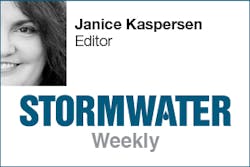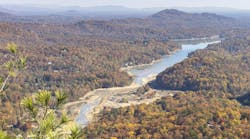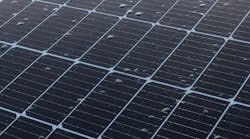
Last Friday, a federal court delayed enforcement of the Clean Water Rule. This preliminary ruling, which is to be followed by a more thorough review, is the latest in a series of legal decisions both in favor of and against the much-debated rule.
The Clean Water Rule went into effect in August, but even before it did, a federal judge in North Dakota had issued a temporary injunction against it, which applied in 13 of the states that had previously sued to block the rule. On the same day, however, a federal judge in Georgia upheld the rule. Both houses of Congress, encouraged by constituents in the agriculture industry, have at various times proposed bills to block it or rewrite it. And finally, last week, the Sixth Circuit Court of Appeals halted the rule on grounds that it probably exceeds EPA’s legal authority.
EPA and the Army Corps of Engineers have argued since they first proposed the rule that it does not actually give EPA more authority than it had before, but simply clarifies what has been covered by the Clean Water Act all along. (You can see EPA’s page explaining it here.) They say that two different Supreme Court decisions weakened the CWA and left ambiguity about exactly what’s covered. Those decisions—Solid Waste Agency of Northern Cook County v. US Army Corps of Engineers in 2001 and Rapanos v. United States in 2006—limited authority over some non-navigable waters, wetlands, and intermittent streams, which in some cases are tributaries to larger water bodies. EPA has argued that these decisions left up to 60% of the nation’s streams and wetlands potentially unprotected. EPA and the Corps of Engineers have also pointed out that the new rule preserves existing exemptions for agriculture.
Agricultural interests have been possibly the most vocal in trying to block or overturn the rule. Here is a page sponsored by the Farm Bureau, for example, called “It’s Time to Ditch the Rule” that sets out the organization’s arguments against it. (The title of course referring to the argument that the rule seeks to regulate ever puddle, ditch, and ephemeral stream.)
Another EPA page, from last May before the rule went into effect, includes a blog from EPA Administrator Gina McCarthy emphasizing the limitations of the rule. It reads, in part, “The rule only protects waters historically covered under the Clean Water Act. It doesn’t interfere with private property rights, and it only covers water—not land use. It also doesn’t regulate most ditches, doesn’t regulate groundwater or shallow subsurface flows, and doesn’t change policy on irrigation or water transfers.”
We’ve mentioned the rule and the ongoing legal wrangling over it on the websites of various Forester Media publications, and the reactions in the comments have been enlightening. Some of you strongly support the rule, and some of you believe EPA was in fact overstepping its authority. Rather than asking again who supports it and who doesn’t, I’d like to slightly rephrase the question: What effect will this latest decision (and the ones that came before it, and the reversals that may or may not follow) have on the day to day business of stormwater management? That is, regardless of whether the Clean Water Rule finally takes effect, how much is the uncertainty delaying policymaking at the local level, and how—if at all—is it affecting long-term projects you may be working on?
About the Author
Janice Kaspersen
Janice Kaspersen is the former editor of Erosion Control and Stormwater magazines.

